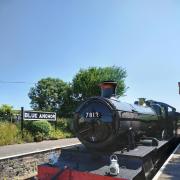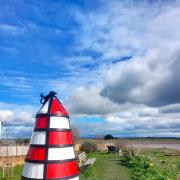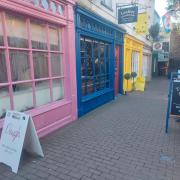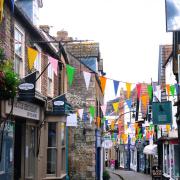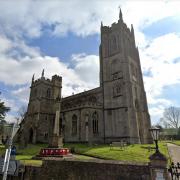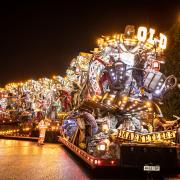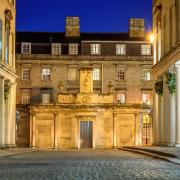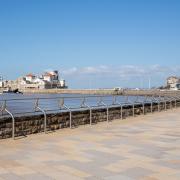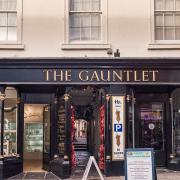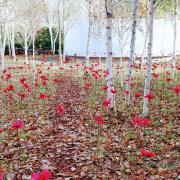Catherine Courtenay takes a look at village life in Somerset

We're unusual as we're still very 'olde worlde' here, with not much development - and we still can become an island."
Graham Walker is a fourth generation farmer in Muchelney although, as his great grandparents, who arrived in the 1890s, brought with them an elderly father, 'that actually makes us a fifth generation'.
Graham and his wife Helen have a farm shop at School Farm where they sell their own produce alongside a range of food and drink items, mostly from Somerset - including beer, cider and cheese.
"We have some beef and sheep, and a few pigs in the summer, and we supply our own shop," he says.

"We used to grow veg, but there's no money in it - and it's too far to bend over," he adds.
During the summer, School Farm serves cream teas, which are popular with the locals, says Graham who adds, yet again revealing his dry sense of humour. "They can't be bothered to do their own - so they come along to us."
Muchelney hit the headlines when it flooded badly in 2013/14 and was cut off for several weeks. In the Domesday Book it was known as 'Micelenie', meaning 'the increasingly great island'. Like many settlements on the Levels, surrounding fields would become flooded during the winter months, transforming the landscape into one of expansive lakes dotted with little villages on the ridges.
The village has always been a draw for visitors - and pilgrims. Many come to see its pottery, set up by John Leach, grandson of the renowned potter Bernard Leach, in 1965. Every item is hand thrown, using local clay, and wood-fired in the adjoining kilns. Next to the pottery is the John Leach Gallery, which not only shows some of the pottery's unique pieces, but also work by other West Country and world-famous artists from further afield.
A keen naturalist, John has also created a wildlife pond. This one-acre sanctuary, which was made in 1988 and is surrounded by 4,000 trees, which John also planted, is now an official county wildlife site.
Over at School Farm, Graham and his son Joe have also been planting trees - a cider orchard.
Consisting of five different varieties, the standard trees (standards are better for wildlife, says Graham) went in five years ago and last autumn saw them making their first cider. It may appear in the shop one day, he says, but only when the time is right.
Muchelney is an attractive village, with thatched cottages and historic buildings, including a gem at its heart - Muchelney Abbey. Now owned by English Heritage, the abbey was once a wealthy Benedictine house. Its principal buildings were demolished by Henry VIII in 1538 as part of the dissolution of the monasteries but the foundations are still visible. The cloister walk still exists and the 16th century abbot's house remains intact; exploring this site is illuminating and very atmospheric.
Nearby is the church of St Peter and St Paul and across the road the National Trust-owned late Medieval Priest's House.
Muchelney certainly sits on ancient soil and if you need proof - just ask Graham.
"There's about 18ins of clay left here from the last time the sea covered the land; under that is peat. If I'm digging a hole for a fence post, I'll often find bits of bog oak in the peat. It comes up looking just like a piece of wood, but it's soft, like a sponge."
What he's holding is hundreds or thousands of years old and yet another tangible indicator of how close this village is to ancient times.
Rustic and stylish
There can't be many wedding venues which are scheduled ancient monuments, but there is one in Muchelney.
An 800-year-old barn was transformed into the award-winning Almonry Barn seven years ago.
"We are incredibly lucky to be custodians of this building," says Louise Wilson-Ward who, with her mum Angela, created the rustic and stylish venue.
The barn was once part of the abbey and used by monks to give alms to passing pilgrims. It even has centuries-old hex carvings, or blessing spells, on the walls and discoveries are still being made - they recently uncovered an ancient doorframe, still largely intact despite being hidden within a wall.
Population
195 (2011 census)
Stay: Courthouse Barn is a self-contained barn conversion, attached to the historic Courthouse Farm. It has views of the church and is just a short stroll from the abbey. It's available through Airbnb.
Buy: Also close to the church, the eight-bedroom Edwardian Almonry House is for sale. It comes with three acres of gardens, paddock and orchard. POA through Rolfe East.




